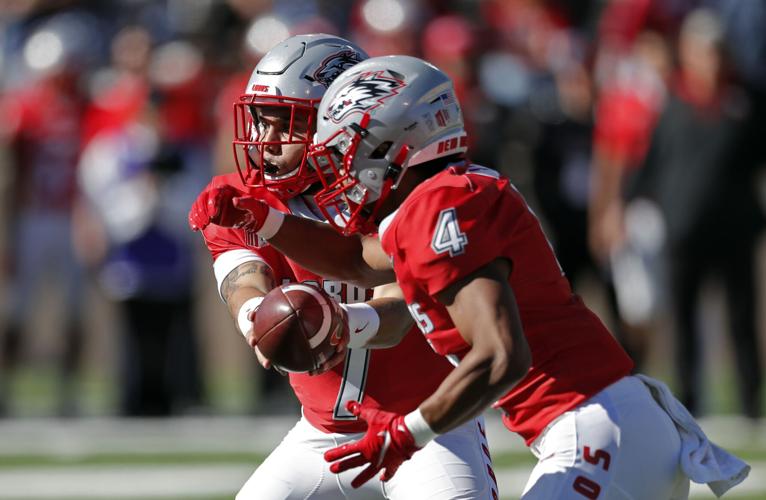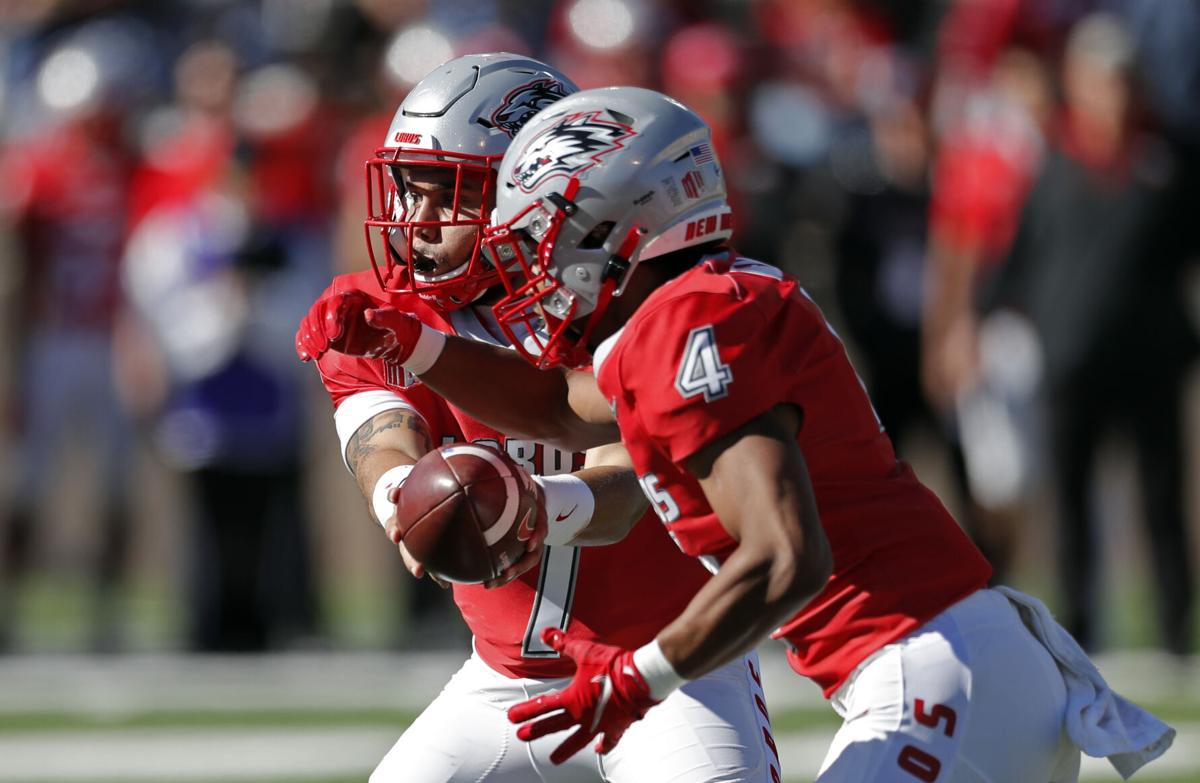Editor’s note: Some questions have been edited for clarity and brevity.
With all the Pac-12 expansion talk, why doesn’t New Mexico get a look from the conference? I understand the football program hasn’t been especially notable of late (arguably, neither has SMU). But New Mexico would seem to check a lot of boxes for the Pac-12. — Brent Carrell
Wilner: I’m not sure about “a lot” of boxes, but at least three.
New Mexico works geographically, it’s an R1 research school (the highest level) and the basketball program operates at a sufficiently competitive level, although the past eight or nine years have been rough.
Also, the Albuquerque media market is the 48th-largest in the country, substantially bigger than Tucson and Spokane, for instance.
In all candor, the Hotline has wondered about the Lobos as an expansion candidate precisely because nobody is talking about them as an expansion candidate.
After all, the fundamental tenets of our reporting strategy are 1) follow the money, and 2) listen to the silence.
We know the Pac-12 presidents approved four schools as candidates for expansion: San Diego State and SMU are known; and Colorado State could be the third. But the fourth is a mystery.
Is it Fresno State or UNLV?
Could it be Tulane or Rice?
What about Boise State or Gonzaga?
Our advice: Don’t rule out any option. That includes New Mexico, although we’re fairly skeptical of the Lobos’ identity as the mystery school.
The R1 status is notable, but New Mexico isn’t a member of the Association of American Universities, and it ranks 212th in the U.S. News and World Report list of national universities.
Also, the football program is third-rate.
The Lobos can’t match San Diego State as an institutional, competitive or financial fit. Nor do they bring SMU’s massive market and long-haul potential. (As a private school with a wealthy donor base, the Mustangs could plow huge resources into football.)
In other words, New Mexico doesn’t have enough merit in any aspect to clear the expansion bar.
Nothing surprises us in the realignment game, especially when the Pac-12 presidents are involved. But the Lobos as a viable candidate for expansion would come pretty close to a surprise.
Retired Fox Sports president Bob Thompson estimated the Pac-12’s media value without USC and UCLA as $300 million annually, and the Pac-12’s own consultants reportedly said USC accounted for 40% of the total value. Do you think commissioner George Kliavkoff declined market-value bids or never received market-value bids? — @Jalex0077
Wilner: Let’s be clear at the outset: We don’t know the details of any bids. Sure, there have been loads of rumors on both traditional and social media platforms, but it’s all speculation.
Nor do we know exactly what Kliavkoff promised the presidents at the outset of the process or whether multiple scenarios were presented based on UCLA’s status.
And we cannot ignore the impact of the Big 12 executing an early renewal of its deals with Fox and ESPN for $31.7 million per school, which undercut the Pac-12’s market value.
That said, we are fairly confident the Pac-12 could have secured bids from ESPN and Fox during the exclusive 90-day negotiating window that paid in the range of $30 million per school, with ESPN taking the much larger share of inventory.
But in that scenario, would the schools have agreed to the deal?
Or would they have gazed at the Big Ten’s mammoth contract (approximately $65 million per school) and rebuked Kliavkoff for not securing a higher valuation?
Would Oregon and Washington have signed up for five or six years at $30 million without the Big 12’s deal as a point of comparison — as a reality check?
That’s unanswerable, but it’s worth considering for additional context on the process.

UCLA’s second baseman Anna Vines fields the ball in a win over Arizona at Hillenbrand Stadium last month. Is it possible the Bruins' softball program will ever return to the Pac-12 once it leaves for the Big Ten?
Do you think the Pac-12’s upcoming media rights deal will have unequal revenue shares? If so, only in postseason distribution? Or do you anticipate some schools will get less (at least temporarily until they achieve a milestone like AAU membership)? — @Soren_Dorius
Wilner: I anticipate unequal revenue shares on two levels:
If the conference expands, the newcomers won’t receive full shares at the outset of their membership and, perhaps, not for the entirety of the contract.
Maybe SDSU and SMU receive 25% shares for a year or two, then 50% for a stretch and either 75 or 100 percent at the end of the term. (And the newcomers could have different arrangements.)
The Pac-12’s postseason revenue could be based on participation in the College Football Playoff and NCAA Tournament success.
The Hotline sees nothing wrong with an incentive-based model. If anything, it might prompt schools to invest more in their programs.
However, any plan that creates unequal shares of the regular-season broadcast contract, which makes up the bulk of the conference’s annual revenue, is fraught with trouble in the boardroom. We would strongly advise against that approach.
The longer the media rights deal talks drag on, the more I worry that the Pac-12 will fall apart. How concerned should we be? — @WHS1969
Can you update the Pac-12 survival odds you released in the middle of March, which were going down over time? — @RarelyTolerated
Wilner: The updated odds list Pac-12 survival as a 4-point favorite over Pac-12 extinction, down from a high of 5.5 points over the winter ... but up from a low of 3.5 points last week.
The fundamentals that existed last fall haven’t changed. We continue to maintain that:
The Big Ten is likely finished expanding for this contract cycle.
The Pac-12 and Big 12 carry approximately the same media valuation.
The Pac-12 presidents would prefer to remain together.
That said, the longer it takes Kliavkoff to secure a deal, the greater the likelihood of presidential panic or unexpected developments derailing his plans. Time and risk move in lockstep in the realignment game.
So why the half-point upward move in the past week?
Because Colorado chancellor Phil DiStefano recently made it clear to USA Today that he’s willing to wait this out and give Kliavkoff more time to craft an acceptable proposal.
The comments echoed those of Arizona president Robert Robbins, who said earlier this spring that he favored an extended timeline.
In other words, two of the Four Corners presidents seem sufficiently patient, while the other two (Utah’s Taylor Randall and ASU’s Michael Crow) have never seemed likely to jump first.
As long as the quartet holds on, the risk associated with an extended timeframe (presidential panic) is partly mitigated.
Were the UC Regents ever likely to block UCLA’s move to the Big Ten? The possible “Cal Tax” range is significant. Is some amount certain every year? Would they go up to max? — Jim Rathlesberger
Wilner: The regents were never “likely” to block the move, but it was a non-zero possibility for several months.
Our sense is the trajectory changed during the November meeting in San Francisco, at which point the so-called Berkeley tax became the most likely outcome.
After all, California Gov. Gavin Newsom needed at least a half-pound of UCLA’s flesh after his sharp criticism of the Bruins in July.
The amount and duration of the tax likely will be determined after the Pac-12 finalizes its media rights agreement when the impact of UCLA’s move on Cal can be accurately assessed.
If the Bruins are forced to funnel the maximum to Cal ($10 million annually) and incur $10 million in elevated travel expenses, the move becomes much less of a financial windfall.
They stand to receive about $65 million annually from the Big Ten’s media contract. Had they stayed in the Pac-12, the media deal likely would have approached $40 million per school.
Is it possible that, at some point down the road, USC and UCLA realize it’s untenable to ship their non-football teams across the country for every away game and decide to negotiate a return to the Pac-12 as non-football members? — @thatfrankfellow
Wilner: It’s entirely possible that UCLA experiences Big Ten buyer’s remorse in four or five years, once the teams and fans have basked in the new experience for a few seasons and the grind of routine competition takes hold.
I don’t necessarily expect that sentiment for football and men’s basketball but, rather, for the Olympic sports.
Would it ever reach the point that the Bruins negotiate a return, in some fashion, to the Pac-12? Unlikely, but who knows?
By that point, we will be approaching the end of the next media rights cycle, when college sports could undergo another round of significant structural change.
In the new playoff format, how many at-large spots will be in play for the Pac-12, ACC and Big 12? Seems like most years, at least two will go to the SEC and Big Ten, leaving two for all the other teams. Thoughts? — @UACatManDo
Wilner: It’s probably safe to assume the Big Ten and SEC will gobble at least four of the six at-large bids in a given year. But for Washington, Oregon and Utah, there is no reason to think one of the remaining spots is ever out of reach.
Other than Clemson, the ACC lacks an obvious annual playoff contender to grab an at-large berth. Meanwhile, the Big 12 will be devoid of elite programs; the strength of that reconfigured conference will be its depth.
And as we’ve seen from the Pac-12 so often, parity is the enemy of CFP access.
Put another way: The top teams in the Pac-12 will enter each season with a reasonable chance to grab the fifth or sixth at-large bid after the SEC and Big Ten have feasted at the trough.






